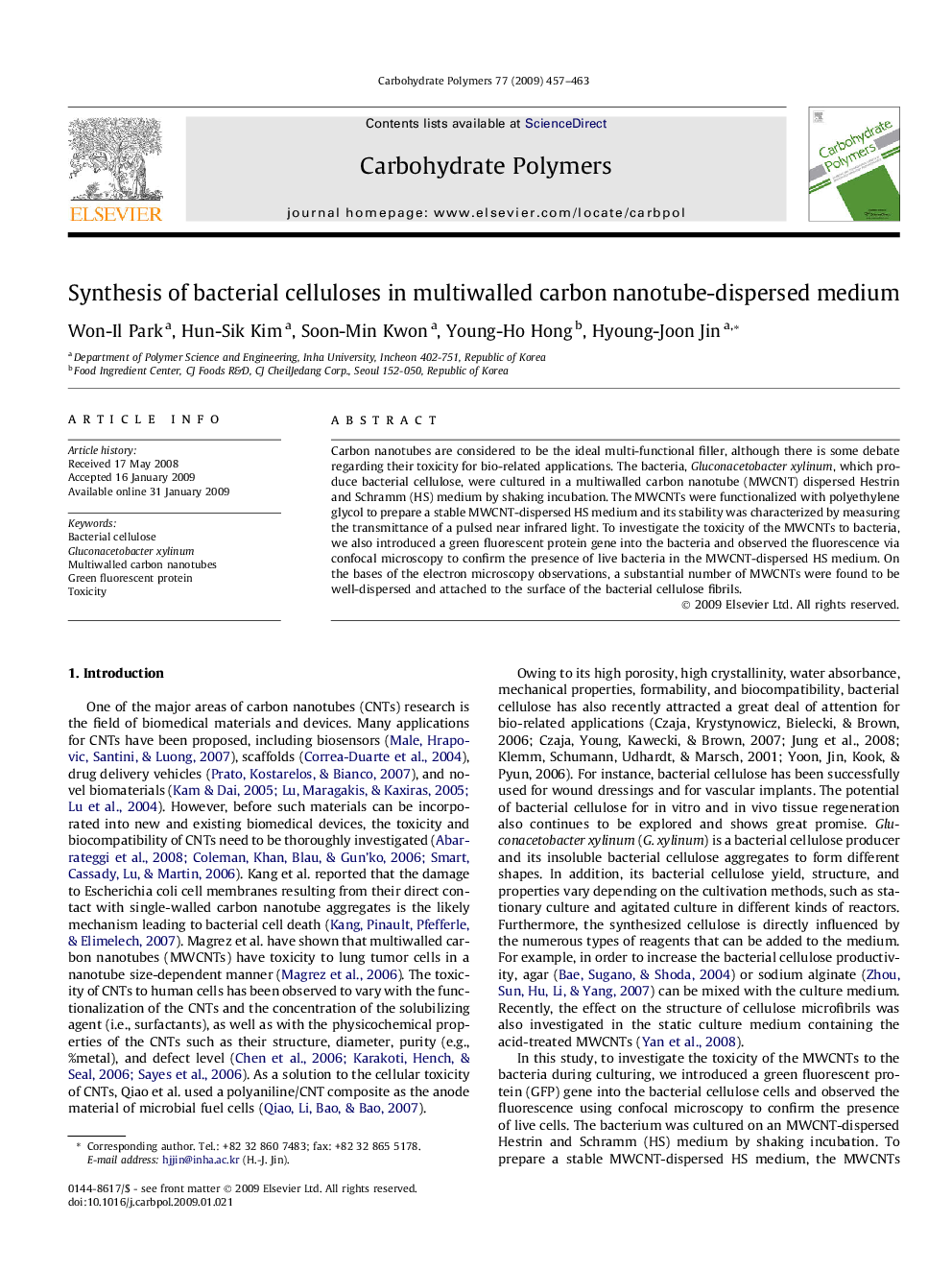| کد مقاله | کد نشریه | سال انتشار | مقاله انگلیسی | نسخه تمام متن |
|---|---|---|---|---|
| 1386139 | 982476 | 2009 | 7 صفحه PDF | دانلود رایگان |

Carbon nanotubes are considered to be the ideal multi-functional filler, although there is some debate regarding their toxicity for bio-related applications. The bacteria, Gluconacetobacter xylinum, which produce bacterial cellulose, were cultured in a multiwalled carbon nanotube (MWCNT) dispersed Hestrin and Schramm (HS) medium by shaking incubation. The MWCNTs were functionalized with polyethylene glycol to prepare a stable MWCNT-dispersed HS medium and its stability was characterized by measuring the transmittance of a pulsed near infrared light. To investigate the toxicity of the MWCNTs to bacteria, we also introduced a green fluorescent protein gene into the bacteria and observed the fluorescence via confocal microscopy to confirm the presence of live bacteria in the MWCNT-dispersed HS medium. On the bases of the electron microscopy observations, a substantial number of MWCNTs were found to be well-dispersed and attached to the surface of the bacterial cellulose fibrils.
Journal: Carbohydrate Polymers - Volume 77, Issue 3, 11 July 2009, Pages 457–463